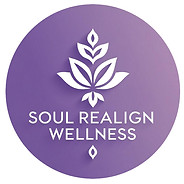Are we Securely Dependent or Insecurely Independent?
- Sravanthi Kovur
- Mar 24
- 5 min read
Updated: Mar 25
What is Insecure independence, and how does it differ from true, healthy independence?
Have you ever felt like asking for help makes you weak?
Do you push through struggles alone because you believe no one will truly support you?
Does self-reliance leave you feeling strong — but also exhausted and unseen?
Hyper independence or Insecure independence is the belief that I can do it all by myself. More than that, it’s the deep-seated feeling that I HAVE to do it all by myself because I won’t have support anyway. Nobody has ever truly been capable of supporting me. I have to be it all for myself.
Whereas, someone who is healthily independent thinks, I can do this by myself, but I also know I can ask for all the support I need in the process. Because I simply deserve it, and I can have it.
If your response was YES to all the questions above, you may have an insecure attachment style — rooted in fear, driven by feeling of not being enough yet. The latter is an indication of a secure attachment style — rooted in a sense of being unconditionally lovable, driven by hope.
Unhealthy independence is more likely to create traps of shame, emotional isolation, loneliness, self-criticism, comparison, and never feeling good enough.

But how does Hyper-Independence happen?
Many of us grew up in environments where emotionally difficult experiences led us to believe that our needs and feelings were too much for our caregivers to handle — or that they didn’t matter at all. Have you ever felt like asking for help made you weak? These experiences may include:
Emotionally preoccupied parents
A usually kind parent who suddenly lost it over a seemingly simple situation
Experiencing some form of abuse
Losing a loved one (person or even pet)
Separation from caregivers
The common thread in all these experiences is trauma, isolation with big and unpleasant emotions, and a lack of repair by the adults.
When our environments do not give us space to express and process our emotions, we tend to disconnect from those parts of ourselves just to exist in those spaces. We begin to believe that minimizing our needs is the only way to receive love, acceptance, and support. And so, we choicelessly embrace emotional avoidance to “keep the peace”.
Some children, instead of minimizing their needs, turn to unconscious self-sabotage to draw the attention of caregivers, in hopes of being met with the gentleness and love they so deeply crave.
This is how insecure attachment and unhealthy independence forms — in the environment of emotionally absent adults who may not even realize the impact of their absence. These adults, too, were once emotionally avoidant children who never got the chance to learn how to work through their own feelings. Ultimately, we see generations after generations being held responsible for keeping someone else’s peace at the cost of their own.
What does Secure Attachment look like?
A child raised in an emotionally safe environment will have a very different response to difficult experiences. Emotionally present adults create a space where love, support, and belonging are unconditional. They hold space for their children’s feelings and needs, allowing them to process emotions without fear of dismissal or rejection.

This doesn’t mean the adults never make mistakes or lose their cool. But when they do, they willingly repair the emotional rupture, ensuring the child feels safe again. They acknowledge that they, too, are learning, growing, and evolving through parenthood — openly collaborating with their children instead of shutting them down.
Some families focus only on physical security — food, shelter, education, financial stability — without realizing emotional security is just as essential. True resilience comes from inner security, not just external stability. A family where peace and harmony are shared responsibilities — not resting on just one person or gender — builds a strong foundation for both emotional and material well-being.
The impact of Emotional Isolation?
Even in this very moment, as you read, countless children are coming to the painful conclusion that their needs and feelings are too much — or don’t matter at all. They start running away from their emotions, believing they are overwhelming and unsafe. In reality, these emotions are simply messengers of their need for safety, security, love, and belonging.
When children don’t find emotional security at home, they look elsewhere — social media, peer influence, comparison — falling into environments that do not have the responsibility to truly understand them. These external influences often feed off their insecurities rather than heal them.
This is why it is essential for adults to unlearn hyper-independence and relearn true dependence themselves. It is only through true, consistent, safe dependence that we learn healthy independence.
Unlearning: A New Perspective
True dependence is not about relying on others to be a certain way for us — it’s about knowing we are fundamentally deserving of support. That support can come in any form or way.
A secure parent doesn’t always say, I know what to do. I will fix your problems. I will rescue you. Instead, they often say, Even if I don’t fully understand what’s going on or what you need at this point, I am here to support you. I am willing to work together with you to figure this out. I am here, learning, growing, and evolving along with you. Because you always matter and are always loved.
The easy part is that children naturally know they are lovable and unconditionally deserving of support. They even ask for what they need. It is enough that the adults stay connected with them consistently — without trying to minimize their true nature. It is like keeping in touch with a close friend whose relationship deeply matters to you. You don’t abandon or minimize what you love, for what you need.
Security is knowing that however you are, wherever you are, you are loved, supported, and you will always find your way. We don’t need fundamental abandonment or betrayal through life’s biggest lessons. We can learn, grow, and evolve even with consistent Love.💗
The Path Forward: Reclaim emotional security for Yourself
When an individual works on shifting their own relationship with themselves — learning to create a safe space for their inner child — they become more confident in providing a secure, loving environment for their children. This cycle of healing extends to future generations.
Maybe your parents didn’t know how to do this. Maybe they could only free themselves to a certain extent. But you can go beyond.
Go beyond perceiving yourself as fundamentally insecure just because of past experiences. The environments you grew up in reflected the limitations of those around you — never your worthiness or ability to receive love, support, and safety.
You have always been perfect, beautiful, and enough just as you are. And it is indeed important to create the environment you have always needed. Work through whatever is blocking you from receiving it, and being effortlessly you — because your authenticity, your truth, and your unique existence are exactly what the Creation needs.
Work with an inner child healer, belief therapist, or any authentic guide who can help you break free from those limiting self-beliefs. Support is unlimited.
When you embrace you, the whole creation will meet you there — unconditionally. 💛🙏







Comments